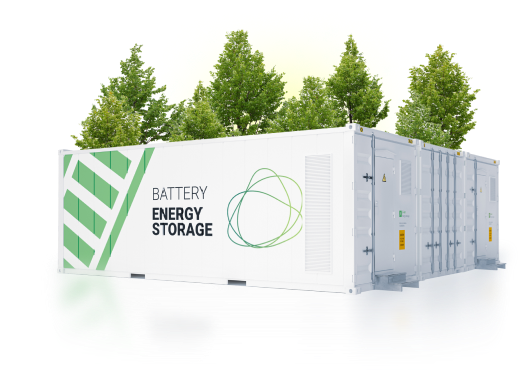|
|
|
Dartford Energy Hub | Public Consultation

Clearstone Energy is proposing to develop the Dartford Energy Hub – a 300MW battery energy storage facility – on land off Station Road, Southfleet, Dartford. This page provides an overview of the proposal.
The Dartford Energy Hub would store excess electricity available when generation from the UK’s wind turbines and solar farms is higher than demand and release that energy back onto the grid when demand is higher than generation. This network balancing function is critical to ensuring a reliable electricity supply for local homes and businesses and currently fulfilled by gas-fired power stations.
The project would connect to National Grid’s Northfleet Substation. As the grid supply point for homes and business across Dartford, Gravesham and Sevenoaks Boroughs, Northfleet Substation is a strategically important location for adding battery energy storage to the electricity grid. The project includes a comprehensive package of community benefits to ensure that the local community benefits directly from this local renewable energy project.
Capable of storing energy equivalent to 1 hour of power for all homes in Dartford, Gravesham and Sevenoaks Boroughs when fully charged
Dartford Energy Hub Impact

Would displace 40,000 tonnes of CO2 emissions from gas fired power plants each year
Equivalent to planting 1.9 million trees
+++++++++++++++++++++++++++++++++++++++++++++++++++++++++
Latest News
13th January 2025
We have now submitted a planning application for the project. Plans and accompanying reports can be found on the Dartford Borough Council website. The planning application reference number is 24/01470. Members of the public can comment on the application until Friday 7th February.
+++++++++++++++++++++++++++++++++++++++++++++++++++++++
THE CRITICAL ROLE OF BATTERY ENERGY STORAGE
Built for an era of coal and gas fired power stations, the existing UK electricity network needs upgrading to support the deployment of renewable, low carbon energy. The inflexibility of the network is adding costs to bills and failing to deliver the emissions reductions needed to prevent climate change.
Batteries solve one of the biggest challenges facing renewable energy. Matching weather dependent solar and wind electricity with household and business electricity demand.
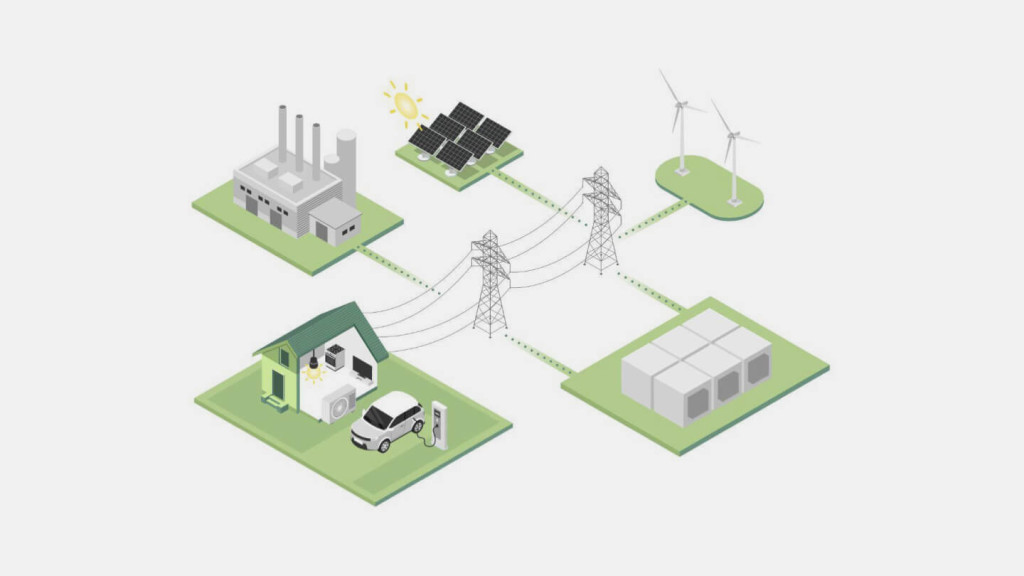
Currently, gas power plants are turned on to supplement wind and solar energy supply and meet peak electricity demand between 7 and 9am and 6 and 8pm
Batteries maximise the amount of renewable energy we can use at home and reduce the number of times we need to turn on a gas fired power plant to meet peak demand, saving money and reducing GHG emissions
Weather dependent wind and solar energy farms often produce more energy than is needed to meet electricity demand overnight and at off peak times during the day
With both supply and demand fluctuating across the day, batteries store energy when there’s more than needed to meet demand and discharge it when there’s less than needed
Proposed Site Layout Plan
The redline boundary on the plan below contains all development works associated with the project. The battery facility covers an area of 5.5 hectares. The northern section of the site is bordered by Station Road, Millbank Garden Centre and a disused railway line. The southern section of the site is bordered by Station Road and the HS1 railway line to Ebbsfleet. The redline boundary extends north across the A2 to Northfleet substation for the underground cable that will connect the project to the electricity grid. The cable route follows the path of a disused railway line to avoid disruption to local roads.
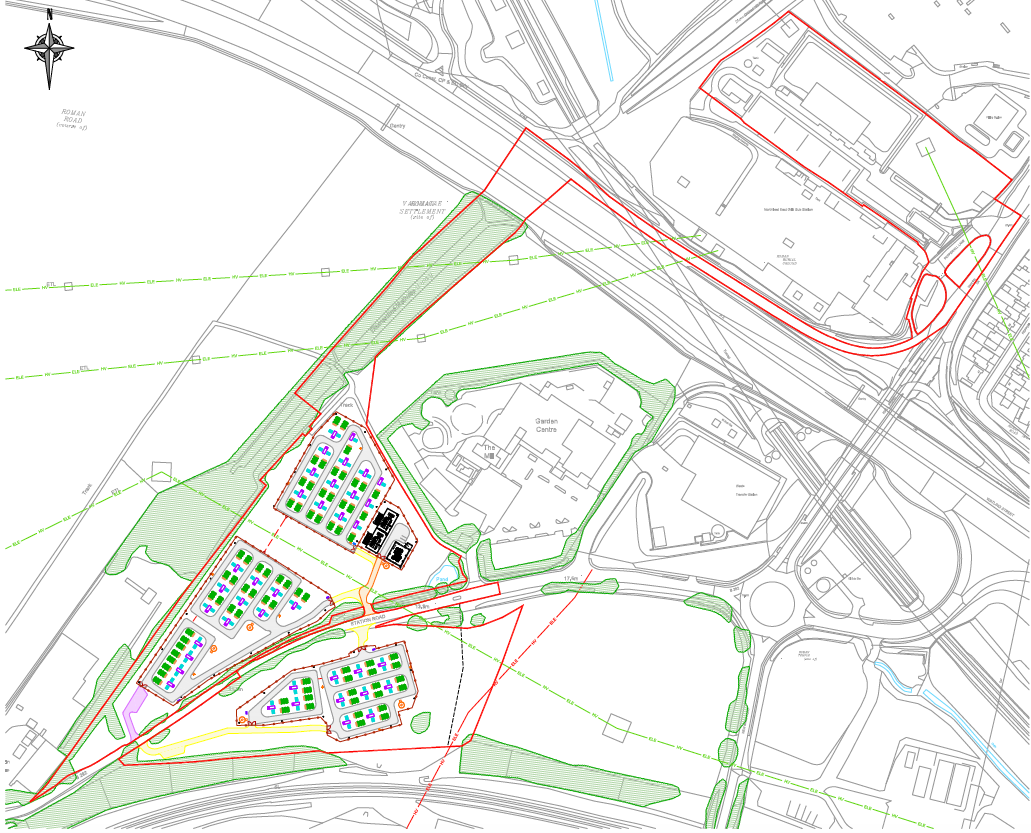
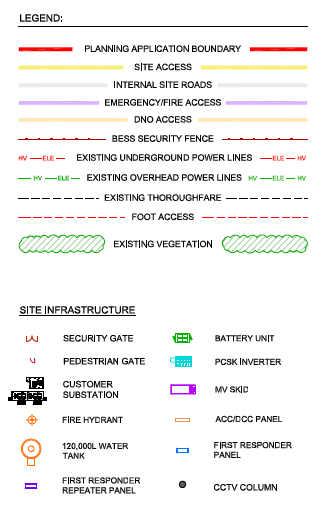
=
Delivering an uplift in biodiversity
The project would deliver a 13% uplift in biodiversity through the ecological enhancement of an additional 5.5 hectares (13.5 acres) of land within Dartford Borough. The land that would be used for biodiversity enhancements is shown on the plan below. A small section is located to the east of the battery facility with the majority located 700 metres south of the proposed development site on two fields off Warren Road to the east of Southfleet village. New wildlife habitats would be created through the planting of wildflower grassland, scrub and hedgerows. Species planted would mimic those already found in the area.
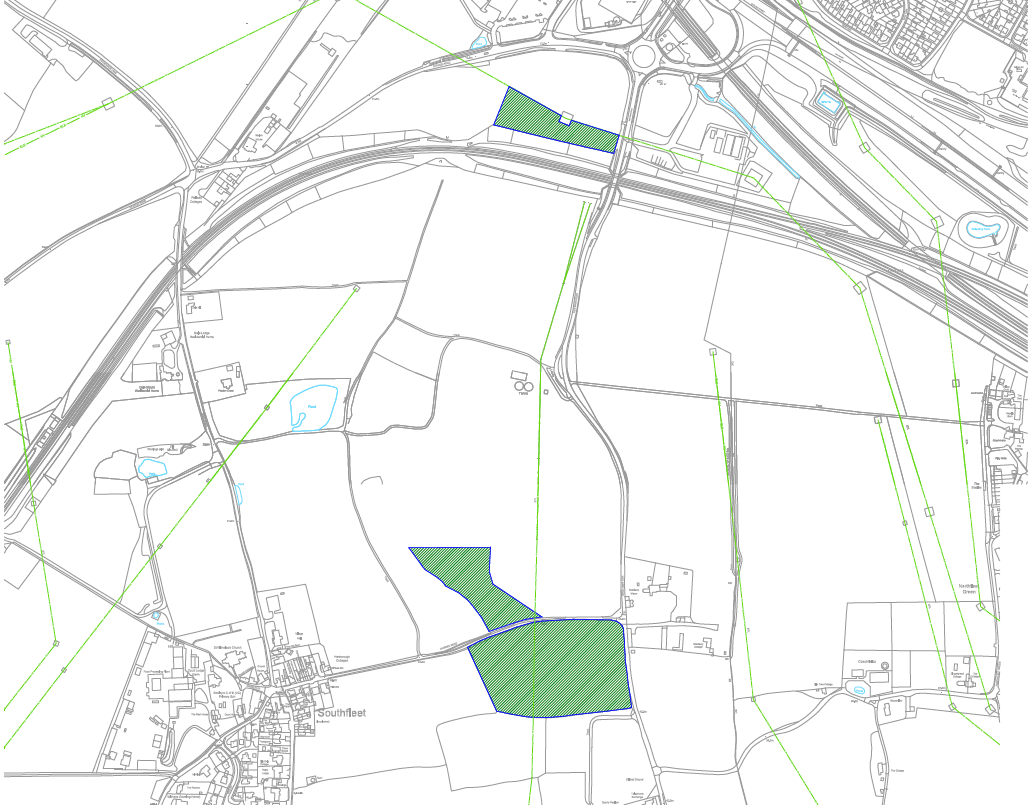
Minimising Visual Impact
Open views of the site are largely restricted to Station Road and the public footpath running between New Barn Road and Dale Road by the undulating topography of the area and existing development. The landscaping plan below shows how new hedgerow and woodland planting will be used to screen these views.
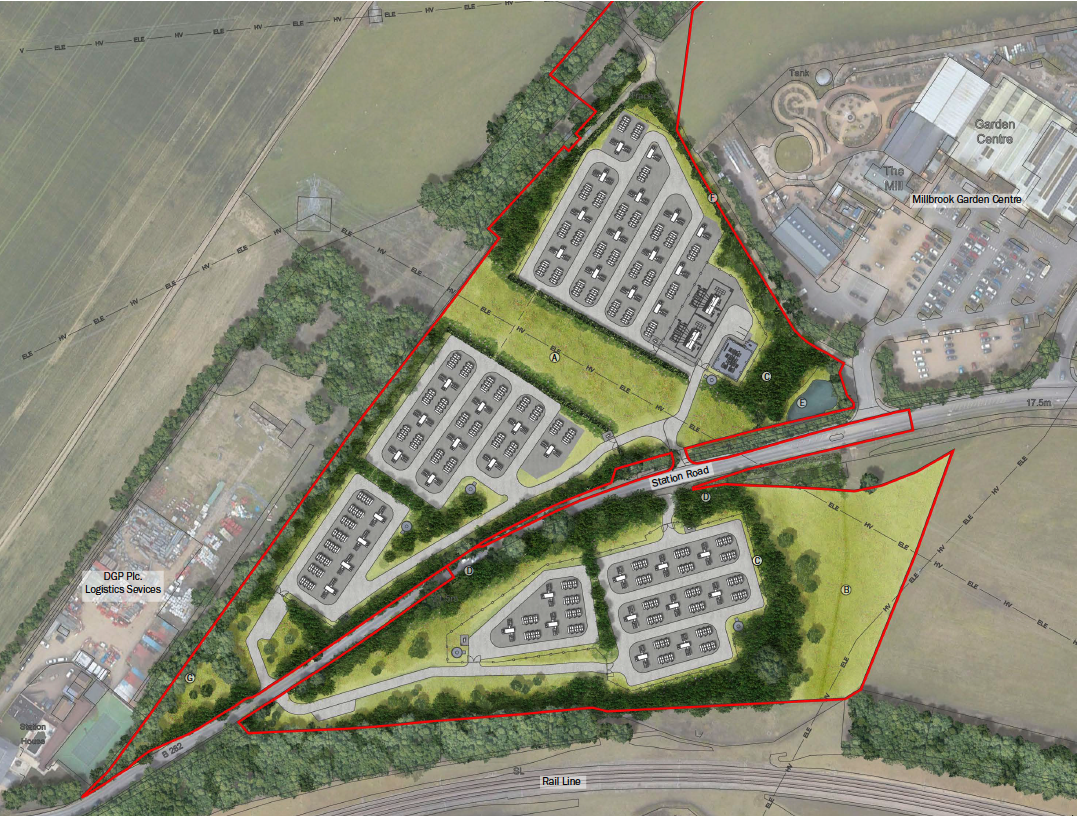
.
Frequently asked questions
No – while the facility would generate some low-level electrical noise from the inverters, switchgear, and fan equipment this noise would not be perceptible beyond the site boundaries. To demonstrate this, a full Noise Impact Assessment has been submitted as part of the planning application.
All Clearstone projects must comply with the standards set out in our comprehensive Battery Safety Standards Plan. Our safety plan draws on best practice from the UK’s National Fire Chiefs Council (NFCC) and the US’s National Fire Protection Agency (NFPA). These standards cover all aspects of the project – technology, site design, installation, operation and emergency response plan – to ensure that it meets the highest safety levels. Kent Fire & Rescue Service was consulted on the project before the planning application was submitted. If the planning application is approved we will continue to work with them on final designs and an emergency response plan.
No, this would be a temporary 40-year use of the land, with batteries, other equipment and hard infrastructure removed at the end of the project and the land returned to agricultural use.
The land is privately owned, Clearstone Energy has an agreement in place with the landowner for the use of the land. We have applied for planning permission for the development area outlined on this web page and have no plans for further development.
No. Most of the components are prefabricated offsite rather than assembled in situ. On site construction would be restricted to the laying of access tracks and creation of level platforms for the battery containers to sit on. Prefabricated units would be craned into position ready for cabling and connection works. As such, project construction would take 6-9 months.
The lithium-ion batteries that will be used in the project are not reliant
on scarce raw materials. There are established recycling processes for recovering the most common elements used in battery construction – iron, phosphate and lithium – for re-use.
Typically, there would be two to three HGVs a day bringing prefabricated units to the site during construction. Construction traffic would route directly from the A2 and Station Road to the site avoiding residential areas. Once operational, traffic would reduce to a light goods van visiting a couple of times a month.
No, there will be no lighting on site.
The maximum height of the batteries would be 3m. However, these would be screened by existing hedgerows and new woodland and hedgerow planting.
New planting will be species that are native to the local area. We will also be responsible for maintaining planting across the lifetime of the project. This commitment would be part of any planning approval for the project.
Clearstone Energy is a leading independent developer of renewable energy and energy storage projects that increase the availability of clean energy and improve the resilience of the electricity grid.
We are working with National Grid to develop solar generation and battery storage projects that are building a UK energy system based on clean, low cost and renewable energy.
Our experienced team has a track record of developing successful renewable energy projects that are providing clean and reliable energy to communities across the UK.
Since founding in 2016, Clearstone Energy has developed eleven energy projects in the UK. Two are operational and nine are in or awaiting construction.
We believe that our projects can do more than energy generation and storage. They support the adoption of renewable energy and energy efficiency technologies in the communities that host them. They provide opportunities to build habitats for wildlife and contribute to the preservation of local ecosystems. They provide support for community projects.
Talk to us.
As project neighbours your views are really important to us. Sam Thompson is the Development Manager for the Dartford Energy Hub project.
You can email Sam at dartford@clearstoneenergy.com. Whether it’s comments, feedback or questions we’d love to hear from you.


